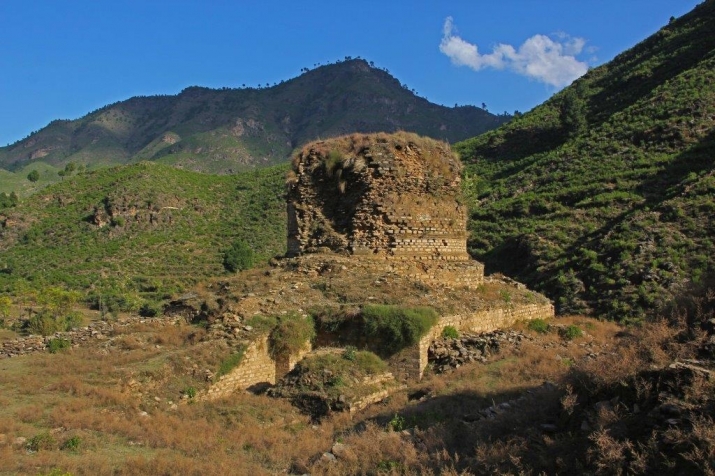NEWS
Falling into Ruin: The Tokar-Dara Buddhist Stupa in Pakistan
 The Tokar-Dara Stupa. From morningpost.today
The Tokar-Dara Stupa. From morningpost.todayThe historic Tokar-Dara Stupa, which lies at the foot of northern Pakistan’s Swat Valley, is falling into disrepair due to inadequate protection by the government and the Department of Archaeology and Museums and is in need of immediate attention, according to archaeologists. Situated about three miles south of the city of Barikot (formerly known as Bazira), the ancient site was constructed when Buddhism flourished in the region between the 1st and 3rd centuries. The stupa forms part of a complex boasting a number of Buddhist monuments, including a monastery, an assembly hall, a cave, an aqueduct, and residential settlements, all considered to be of significant historic value.
Regarding the stupa, Dr. Luca Maria Olivieri, director of the Italian Archaeological Mission in Pakistan, noted, “It is an important Buddhist sacred site having four columns, as that of the Saidu Sharif stupa, and also for its central gigantic niche as that of Amlukdara stupa.” (Dawn) He added that the stupa was probably abandoned sometime between the 4th and 6th centuries.
Dawn newspaper reported that the site was first mentioned in the book On the Alexander’s Track to the Indus: Personal Narrative of Exploration on the North-West Frontier of India, published in 1929 and written by the Hungarian-British archaeologist Aurel Stein, who visited the ruins in March 1926. Describing his visit, Stein wrote: “I visited another big Buddhist site, quite as picturesque, which lies in a small wooded dale opposite to Najigram village, which is known as Tokar-Dara. Being more easily accessible it has suffered more damage at human hands.”
The site was also partially excavated in the early 20th century by archaeologists E. Barger and P. Wright, who described what they uncovered: “An experimental clearance of the western side of the stupa produced a few extremely battered stone carvings, and portions of the fallen umbrella of the stupa.” (Swat)
Swat Museum curator Faizur Rahman observed that the site had been state property, owned by Swat District, since before 1969, but that the land was later taken over by some influential people who acted in court against the district government’s ownership claim. “The court gave [a] verdict in favor of the influential people,” said Rahman. “We then filed [a] case against the decision in [the] high court, where the case is [ongoing].” He added that until the court gave a final verdict, no activity to preserve the ruins could be undertaken at the site.
Dr. Maria Grazia Turco, associate professor at Sapienza University of Rome, stressed the importance of the site in her article “The Buddhist Site of Tokar Dara 1 (Swat, Pakistan), Building Techniques in the Ancient Gandhara”: “The site displays an enchanting merger between nature and architecture where the few ruins that have withstood the test of time still create a link with the landscape; they are the remains of a heritage which must not only be acknowledged but also enhanced.”
See more
Crumbling archaeological site in Swat needs govt’s attention (Dawn)
Tokar Dara (Najigram) Stupa and Monastery (Swat)
Sculptures from the Buddhist Site at Tokardara (Najigram), Swat (Questia)














